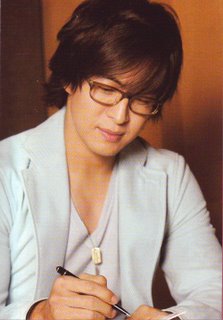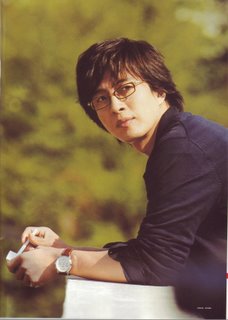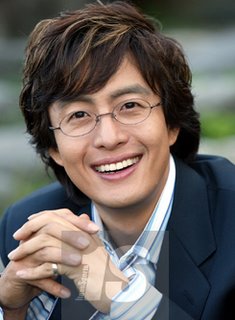

By satovic
Translated by flowerbossa
I will first give the characteristics of the “fire” type.
The characteristics of the energy symbolized by fire (called “pitta”) is heat and sharpness, therefore, people with the pitta constitution tend to possess a lot of heat in their bodies. They perspire a lot, feel uncomfortable in hot weather, and are also “hot” in their temperament. In other words, they tend to be passionate and subject to temper tantrums.
The “sharpness” is evident in the intensity of their eyes and their minds – they are very intelligent. They are orderly and focused. If they moved something, they would not be content unless it is returned to the original position, and they are perfectionists at work, planning things carefully in the process. They like practical things. Pitta also has the function of giving color to objects, so their skin has a lot of moles or freckles. Their skin is warm, moist, and tend to be reddish or yellowish. Lips are red and give a sensitive impression. The light in their eyes is intense, but the eyes themselves are neither big nor small. They tend to get blood-shot easily.
Pitta people have good digestion, resulting in strong appetites. They tend to enjoy cold food and drinks, however, when this energy is out of balance, they crave for food that stores heat in their bodies like hot food, chicken, and alcohol. They are very sensitive to smell, and enjoy nice fragrance – especially aroma that cools, such as lavender and sandalwood.
They are passionate people, very brave and open to challenges. They have a warm heart that enables them to help other people, even enemies, however, once they are betrayed, they will never trust the other again. They are very stubborn. They are good leaders, and have a strong sense of responsibility, and very proud. They enjoy exhibiting their wealth. They like beautiful objects, and are fashionable. They are very interested in fashion and decorative objects, and sometimes like name brand goods, but have their own value system and are proud about that. Because they do not compromise, others may find them stubborn. Once under stress, they tend to develop problems caused by acid, such as skin disease and stomach ulcer, and tend to have diarrhea. People of this constitution move their bowels more than once a day. Because they have strong will power, they are able to manage their daily lives to be orderly, but persevere too much when they are busy. They get irritated when they are hungry. Favorite colors are red and yellow. Also, they tend to be argumentative.
Next, I will talk about the “water” type.
The energy symbolized by “water” or “kapha”, is like water itself - heavy, cold, slow-moving, easygoing, and smooth. Also, just as water solidifies when it turns into ice, kapha has the quality of solidifying.
Therefore, people of the kapha constitution tend to gain weight. They have well-developed bodies, and their build is larger than average and stocky. Because they are slow moving and slow-paced emotionally, they are calm and tolerant. They even may give the impression of being thick. Their way of speaking is smooth and not aggressive. They have a resonant voice that is thick and full, giving a gentle impression. Because they like to keep still, they enjoy staying at home. They like water, and water related places, and such places appear in their dreams.
Because solidification means aspects coming together to stabilize, their personality has a similar trait. People of this type like to collect memories and preserve them. They also like to collect knowledge. They are slow in learning, but what is learned is definite.
When this characteristic is applied in financial matters, these people like to collect money, exhibiting traits of greed, and can be stingy. Also, because they do not like to be active, they tend to be lazy and slob around.
They enjoy things like reading, listening to lectures, and like to spend time meaningfully by doing something that does not require movement. They are slow in taking action because they are slow in comprehension, and contemplative. But once they start something, they have the perseverance to complete it. Kapha people are not very interested in things such as fashion, and care little about what they are wearing, because substance means more to them than the exterior. However, they like things to be clean.
This type likes the colors blue and white. Skin tends to be fair, smooth and cool to the touch. They are quiet people, kind at heart, appreciative and tolerant.
They are considerate towards others. Like sweet things. Has the tendency to be resistant to disease – asthma and respiratory problems are some of the few disorders that this type may face. Is patient and complains little of discomfort such as pain and itchiness. Eyes tend to be big and captivating, lips are big and full, and teeth are white. Hair is black, straight and tends to be moist and heavy. This type likes to eat, but because digestion is slow, they can tolerate hunger.
There you have it, and I did not give the descriptions with Yong Joon in mind. They are all typical traits. But don’t you think many of these apply to wuri man? To sum things up, we can find the characteristics of pitta and kapha in Yong Joon, so therefore we can guess that he has the constitution of a “pitta – kapha” or a “kapha – pitta” (the predominant one comes first). Actors require “vata”, or the “wind” quality, but this seems to be scarce in Yong Joon. When one possesses this quality, inspiration comes first, so emotions can move quickly.
But I think Yong Joon is more of the type that needs to comprehend the situation in his head first, and then make his body take in the information through repetition. “Fire” and “water” is the polar opposite. Therefore, people who have both of these characteristics have an easy time maintaining their health, but if they placed themselves in either of the extremes, they would loose their balance. So, it is very important to keep the middle path.
If Yong Joon-ssi would ask me directly for advice on his diet and general care, I would be so willing to give him everything there is to know!
I would like to suggest this to all of you, too - if you could find out your constitution type, you will have a better idea of how to care for yourself on a daily basis. As for me, after I received Ayurveda treatment, and started to eat in the way suitable for my constitution, I became free of most of my physical problems such as asthma and constipation. And because my days have become more refreshing and pleasant, I am more able to concentrate on a variety of things. This is why it is my wish to share this knowledge with many people as possible.
In Japan, too, there seems to have been a period when Ayurveda was introduced. In the ancient city of Nara, lies the Imperial Repository, called the Shosoin, and this building built in the seventh century contains numerous items from the Nara period. Among the medical herbs preserved there, there are a substantial number of plants with Sanskrit names printed on them, which is used in Ayurveda. Buddha himself received Ayurveda treatment, as it is recorded in Buddhist scriptures, and it is considered that these documents came to Japan through China. If this is so, it would be no surprise if this knowledge went through Korea as well. As a matter of fact, there are many aspects of the diet and bathing methods (such as sauna) in Korea that show great resemblance to that recorded in the classic documents of Ayurveda. When I saw this on television for the first time, I was amazed. In Korea, the knowledge of ancient India is applied in their daily lives, to a greater degree than in Japan. So, I hope one day to visit Korea to collect such knowledge.
And, it is my dream to give a luxurious massage to Yong Joon’s beautiful back with oil containing herbs…oh, but it’s no good…
I will probably be too mesmerized by him….(^ ^;)
Thank you for reading, everyone!




 By satovic
By satovic


 Maestro Seikyo Kim conducted the Tokyo Philharmonic Orchestra at the "April Snow" Event, held at the Saitama Super Arena.I would like to share the maestro's comment on BYJ he posted in his official blog (with the kind permission of his webmaster).
Maestro Seikyo Kim conducted the Tokyo Philharmonic Orchestra at the "April Snow" Event, held at the Saitama Super Arena.I would like to share the maestro's comment on BYJ he posted in his official blog (with the kind permission of his webmaster).

